After fishing the Forebay for many years, I basically forgot how many skills you must master to catch a Striped Bass on a fly . It starts with fly casting. Len Bearden’s memorable quote was ” Meng. you are only as good a fisherman as you cast…”. To Fly Fish for Stripers, you must learn how to rollcast a T-14 to the surface, Waterload a backcast 30 feet straight behind you often in wind, Drift back your stripping hand with the backcast far enough to get a perfect forward single haul. and launch a weighted fly 80 feet without hooking yourself or breaking a windshield. One has to learn how to control the running line with a stripping basket in the wind. You must tie strong knots and build perfect length leaders to maximize the effectiveness of the no false cast ergonomic delivery. Then you have to land the fly in an accurate way, straight with the rod tip down pointing at the fly keeping the line tight . Then you have to keep that line tight while the fly sinks. Then you have to strip your fly back like its running for its life and learn how to feel a strike and possibly set multiple times on light hits all the way to the boat as you are preparing to recast. You need to learn how to hand strip a strong fish in. You have to learn when to put a fish on the reel and when not too. Then you have to land a fish without breaking your rod. Next you have to learn to lip a striper without bleeding and do oral surgery on it removing the fly. All of that is intuitive after years of fishing but it all came back to me how complex this dance is when you try to teach someone for the very first time.
The weather was perfect for a change. It started out dead calm till noon and the a very light breeze till we left. There were only three boats on the water and the dock was empty when we arrived. We spent some time learning to cast on the dock before going out and as we were wrapping things up, Tim Anderson pulled up with his boat. I guess he didn’t get enough yesterday with Vaughn and was back for more. He pointed us to some fish at the weedline near the trench . We first headed to the rock wall and there were no fish around the weed lines there. I also verified that the water was moving into the CA Aquaduct. Yesterday it was reported that the water was running UP the Mendota Canal. Tim texted me that he was getting some action in the weed so we headed south fishing the east weedines and started catching fish. Thanks to Tim, we didnt waste too much time not catching on the rocks. I worked on positioning the boat close to the weeds and we had our best luck close in and casting parallel to the edges. Eventually we made it to the channel and fishing it like I did a couple days ago in the wind proved to be very productive. We left around 2:00 and we headed back very happy with our day.
My long time friend Steve Pryor has always been passionate about fly fishing for as long as I’ve known him. He is an Air Force Vet and retired SJ Police officer who is recovering from back surgery after a life of service to others. He’s the kind of guy you love to share a boat with. It’s not easy to fly fish for Stripers but Steve is a quick study. Because we fish 28 foot t-14 custom shooting heads routinely for Stripers. Conventional Fly Casting can be pretty worthless let alone insanely dangerous. Before I would let him fish 15 feet away from me, I had to try to teach him “the cast”. The Cast at San Luis consists of some basic ergonomics and precision because it is a one backcast cast.
- Strip out the shooting head and 50 ft of shooting line
- Put the stripping bucket where you can strip into it or spend half your tie untangling it on the deck
- Don’t use too long a leader so your fly pops out of water when you lift the fly up from the sunk position
- Roll Cast the shooting head straight out with no slack
- End the roll cast with rod pointing at line and low to the water with line, leader and fly straight out.
- Back cast with rod and Single Haul to launch the line straight back in a perfect backcast.
- Forward cast and Haul in one motion aiming shooting head up and out.
- End the cast with rod pointing at fly and keep straight line tight as it sinks.
- Use minimum effort and force in all steps so you can keep your line in the water longer. Easy Peasy.
I tried to teach him the SynSnap retrieve. It is a simple way to JIg or Accelerate the fly with minimum effort. Take your left hand (if you are right handed) and put it on the top of the fighting butt. Push down sharpley on the the butt section while flicking the rod tip straight up. Immediately use left hand to strip the slack out of the jump. In my opinion, it’s the easiest way to accelerate the speed of the fly in one second with a very short strip. When coupled with a pulse disc, the snap action makes flash reflect in 3d. Fish see it from far away and after long pauses they really attack the fly after the snap.
Steve did great today hooking and landing over 8 nice sized fish with one 22 incher. It was impressive to see how fast he learned some of the nuances. I think I’ll be seeing him at the casting ponds more often and he has even taken up fly tying. Together we ended up with around 20 nice fish and left at 2:00. The fish were still feeding when we left and I saw Tim Anderson working the weedbed after we left. I heard he got over 20 as well.
ULTERRA ISSUES
There have been many people who have been having issues with Ulterra Trolling motors. Brian is still having issues with his , Steph actually used his like a bumper on the trash racks so that doesn’t really count. And I had issues a couple years ago with a freeze in mid stow. These deploying trolling motors have lots of software in them that sync the raising of the motor out of the water with the retraction of the arm. I think the universal cause of all the problems that people are having is low voltage. My solution is using the best batteries – Lithium Ion Battleborns. When you think of the time and effort it takes to keep fixing a trolling motor plus the wasted days fishing without it. Justifying the high cost of these batteries is easy. They work better and last longer. In my opinion, it’s a wash. The problem with Ulterra’s comes after a day like I had last week. High winds while using spot lock. On days where the motor is on 7-10 continuously, my AGM batteries would gradually drop voltage to a point where the electronics in the Ulterra would start to glitch even though there was enough voltage to run the motor. This low voltage problem is hard to diagnose because you always look for the problem with fully charged batteries. Once the motherboard software glitches, you are screwed and need to manually stow. My error occurred when I overloaded the motor getting stuck in weeds. That’s another way to glitch an Ulterra – use it as a weed whacker. The stow timed out in mid stow and that was the end of fishing. I had to manually stow the motor and head in early. I worked on it for 5 hours yesterday to get it working again so I could fish today. The solution for almost all these problems is to physically put the motor into a state of stow by disassembling it and re assembling it in a stowed position. This can be done by removing the screw motor that deploys the shaft and repositioning (screwing or unscrewing the arm till the U arms are even) and aligning both “U” forks and attaching the black connector that fits over them.
After the motor is mechanically put into the stow mode, the hard part for me begins. To test the motor off of the water, I had to disconnect the whole motor from the boat since the trailer gets in the way of deployment. I ordered a quick disconnect mount for the ulterra and built a temporary plywood mount so that I could fish today until it came from Amazon. The motor functioned perfectly today but the temporary plywood mount was flexing dangerously, I will not take it out again until the real mount is installed. I also pulled the Prop and it was surprising how much crap there was around the shaft that you can not see without taking it off. Most of it was weeds and a bit of fishing line (not mine) but it may cause the batteries to drain faster and motor to run hotter.
Yesterday, Vaughn had mentioned that the water seemed to be moving in the opposite direction coming out of the Aqueduct and moving toward check 12. The current was definitely moving into the Aqueduct today and word is that the lake is dropping about two feet a day. The wind was blowing south down the channel today. Ive never seen that before. I had to set up my drift on the east side of the channel from the island to the highway. Casting.parallel to the shoreline was much more productive than fishing to it from the deep. One of the fish we caught today was stuffed with Snails. The snails live in the weeds and I think that fish was feeding right in them.
The Delta Smelt are only a couple inches long and last night I started designing some new flies to try on the Forebay. Vaughn likes to use a three inch fly that is tied with light blue over Mullet . Some guys are using Lee Haskins Delta Smelt and I like a yellow and rust color clouser. I also like Henry Cohens “Something Else” which incorporates a hot pink Fluro Fibre throat, which he says “allows the striped bass to pick your fly out of a crowd of thousands of threadfin.” I came up with a combination of all these flies after I found a source of UV fluorescent Pink thread.

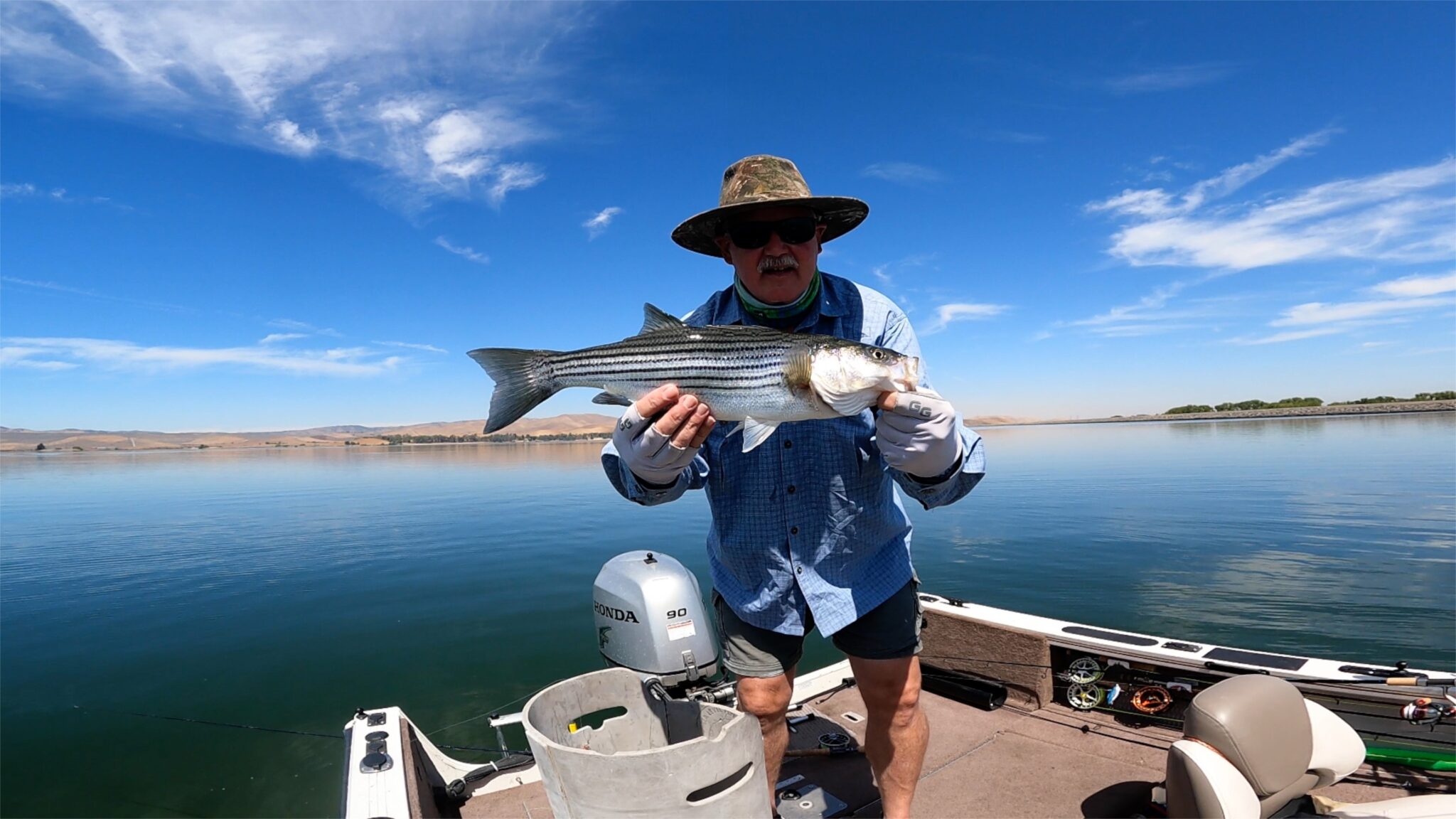
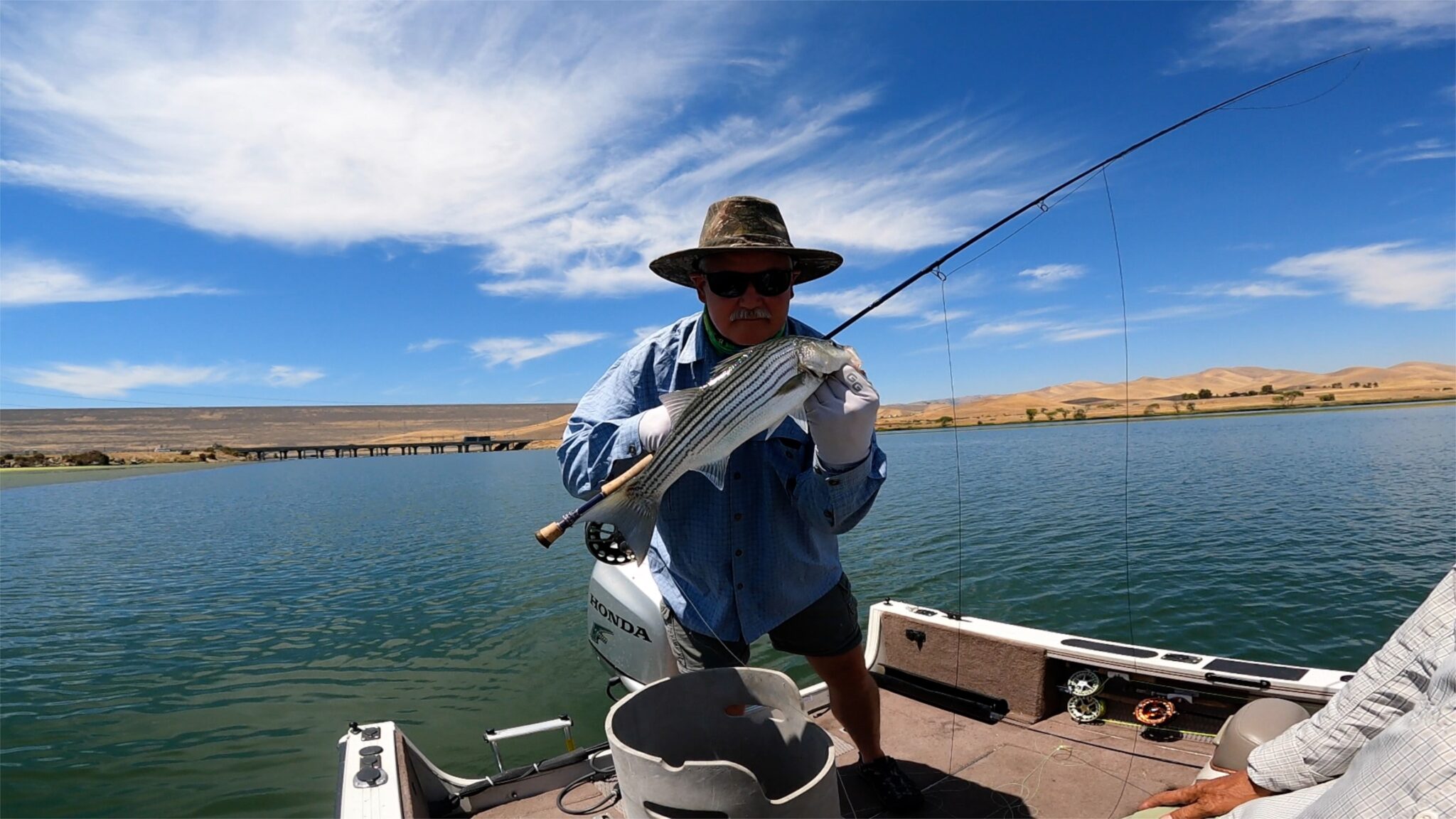
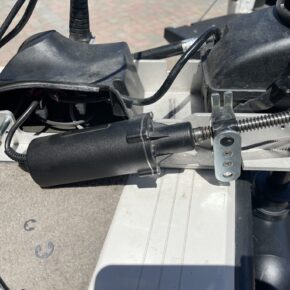
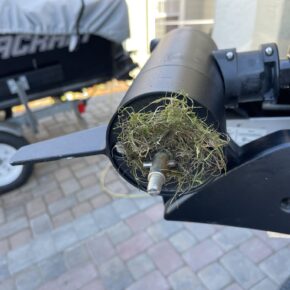
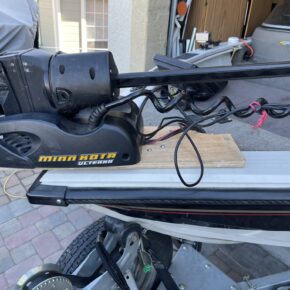
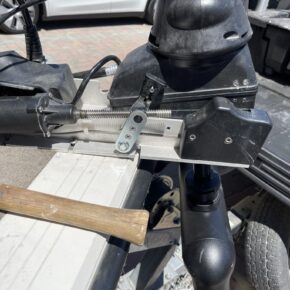
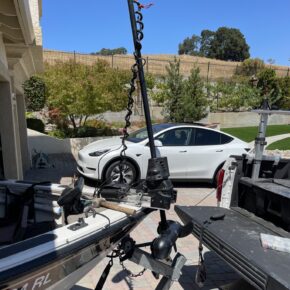
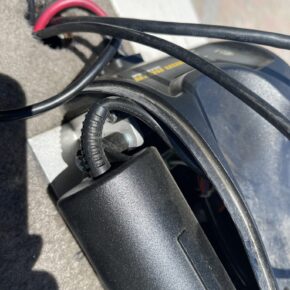

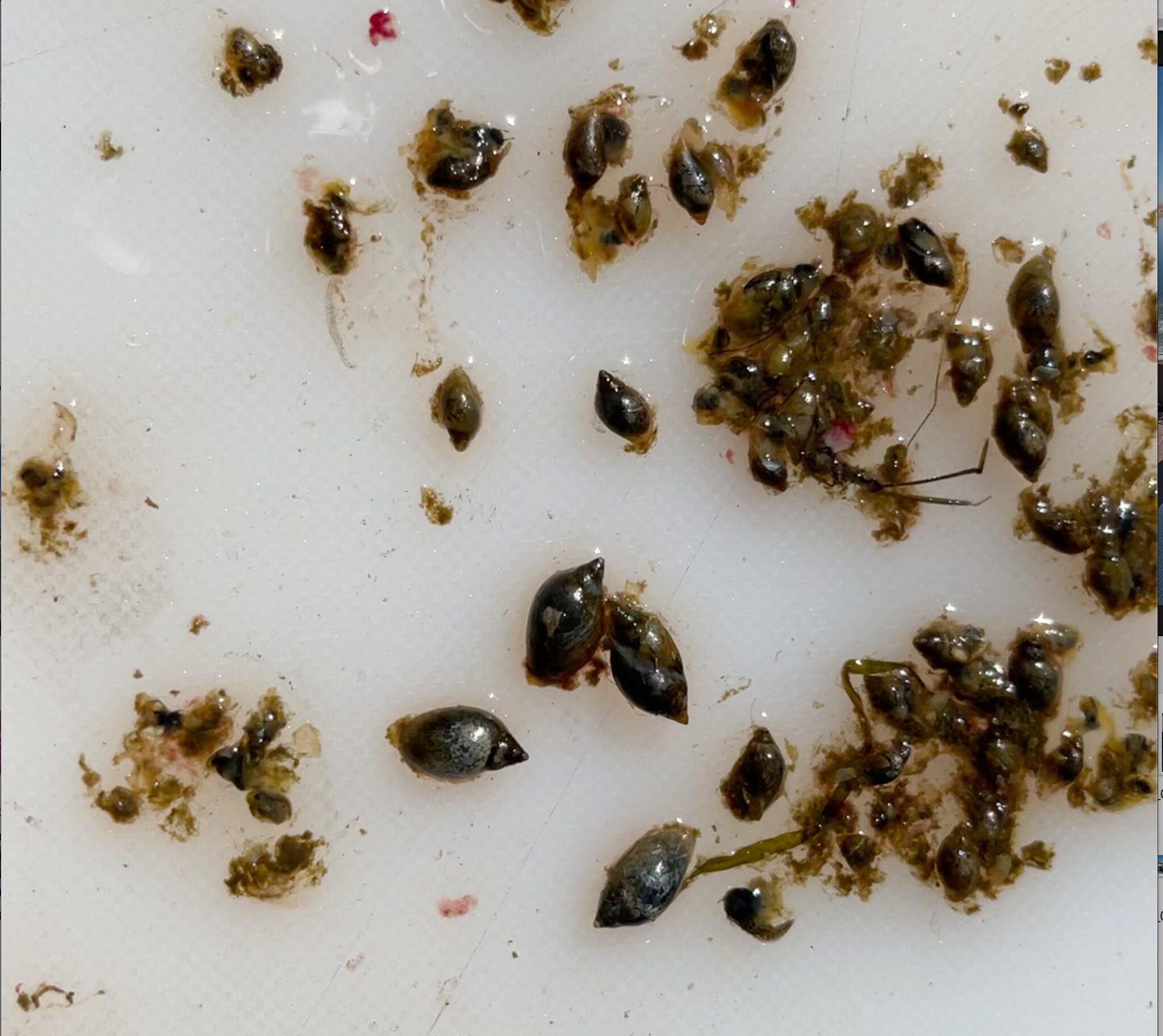
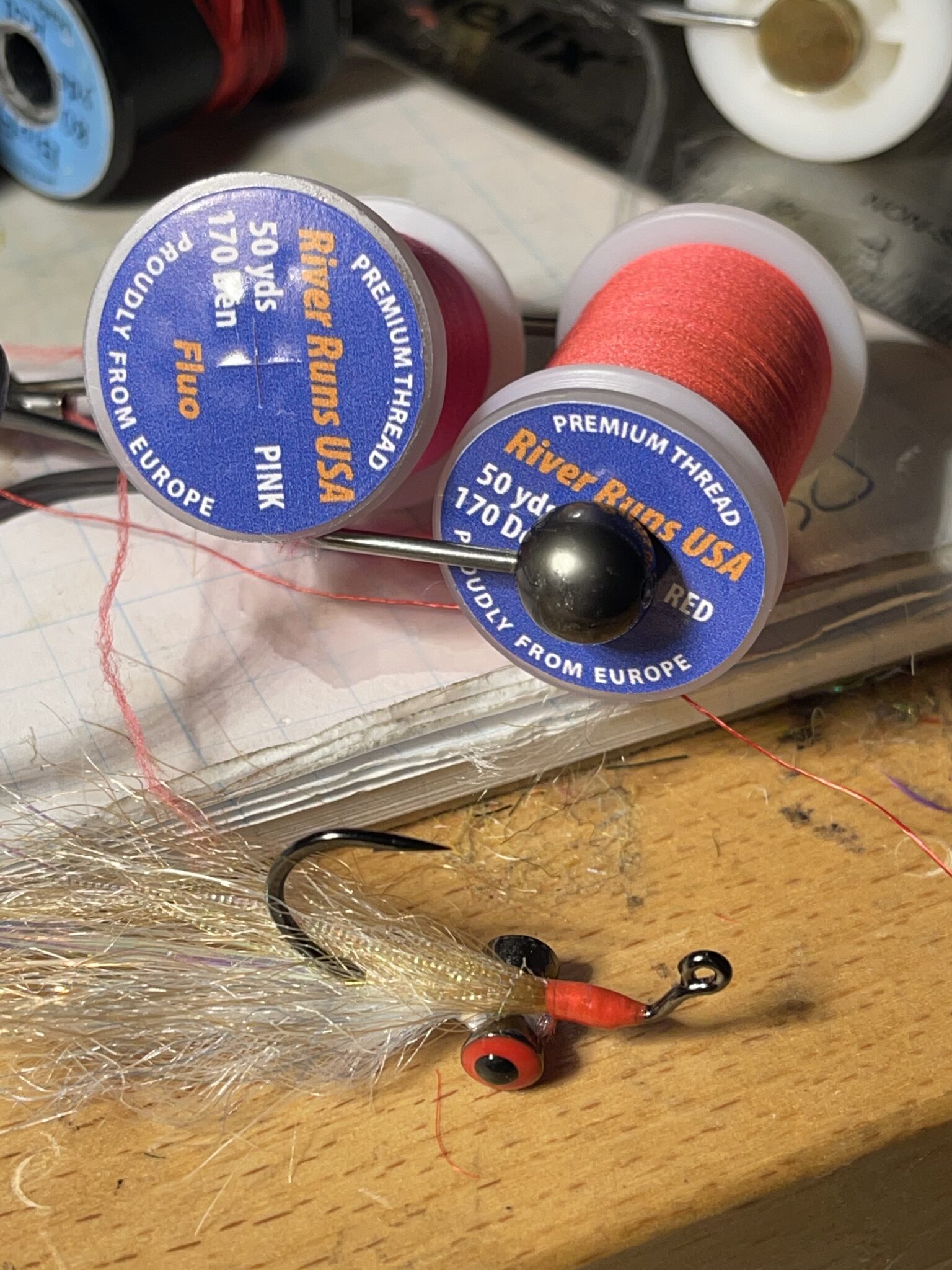
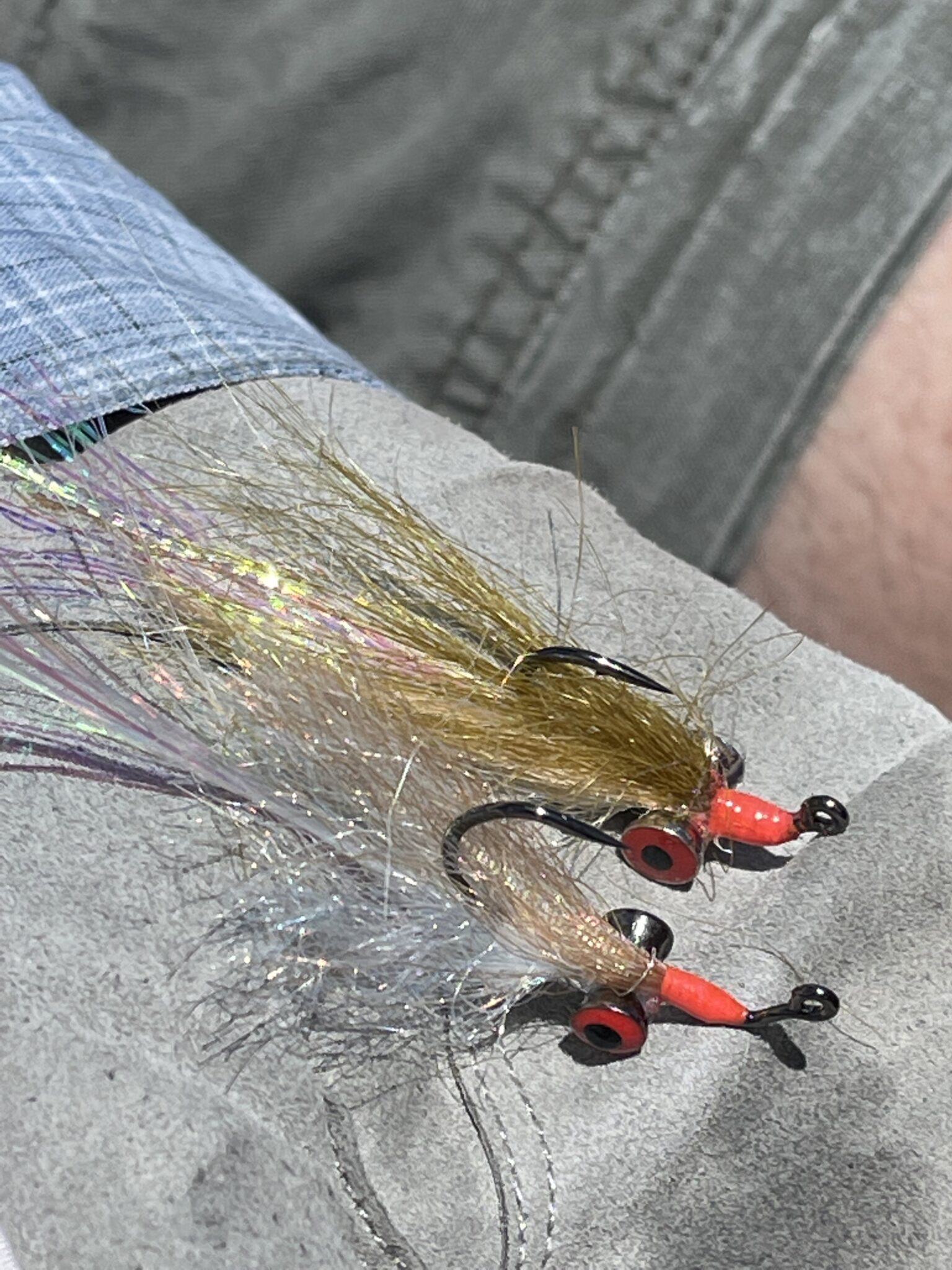

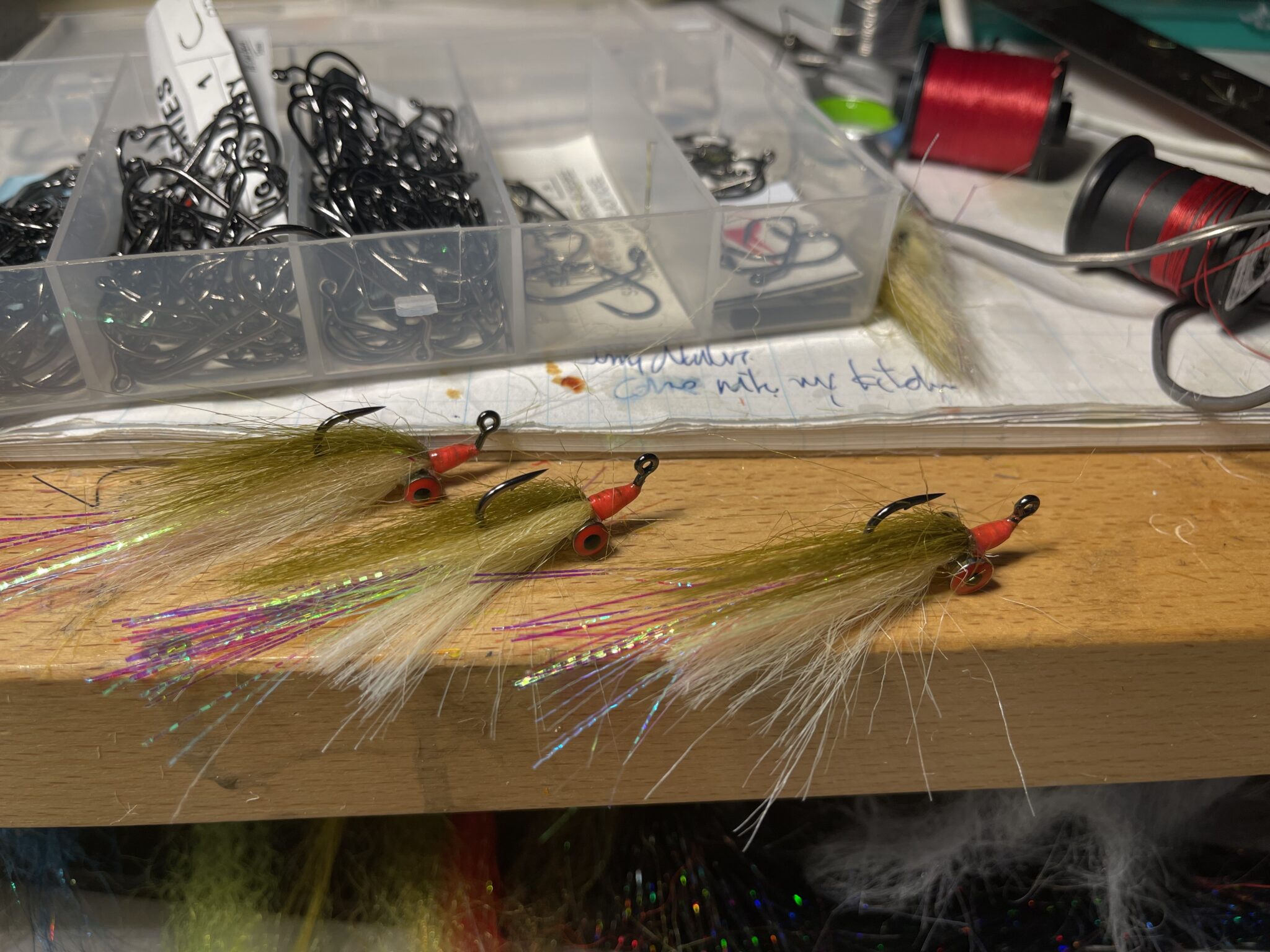




Here is a little tip the we use to help conserve our battery life when on spot lock, when faced with high winds or current. Turn on your main motor (or kicker if you have one) and run it at idle speed in gear to maintain most (but not all) of the thrust needed to hold position against the wind/current. That way the majority of thrust is not coming from your trolling motor. This allows the trolling motor to maintain position at lower thrust speeds (like 3-5) which in turn greatly extends the charge life of your batteries. That’s the only way we can get a full days fishing out of our batteries while using spot lock in wind or current. If we run spot lock and the setting is between 7-10 we’ll be lucky to get 4 hours out of a full charge.
Haha yes running your trolling motor into a wall will do it. Also running it into the back of your truck will do it too. Great day for sure.